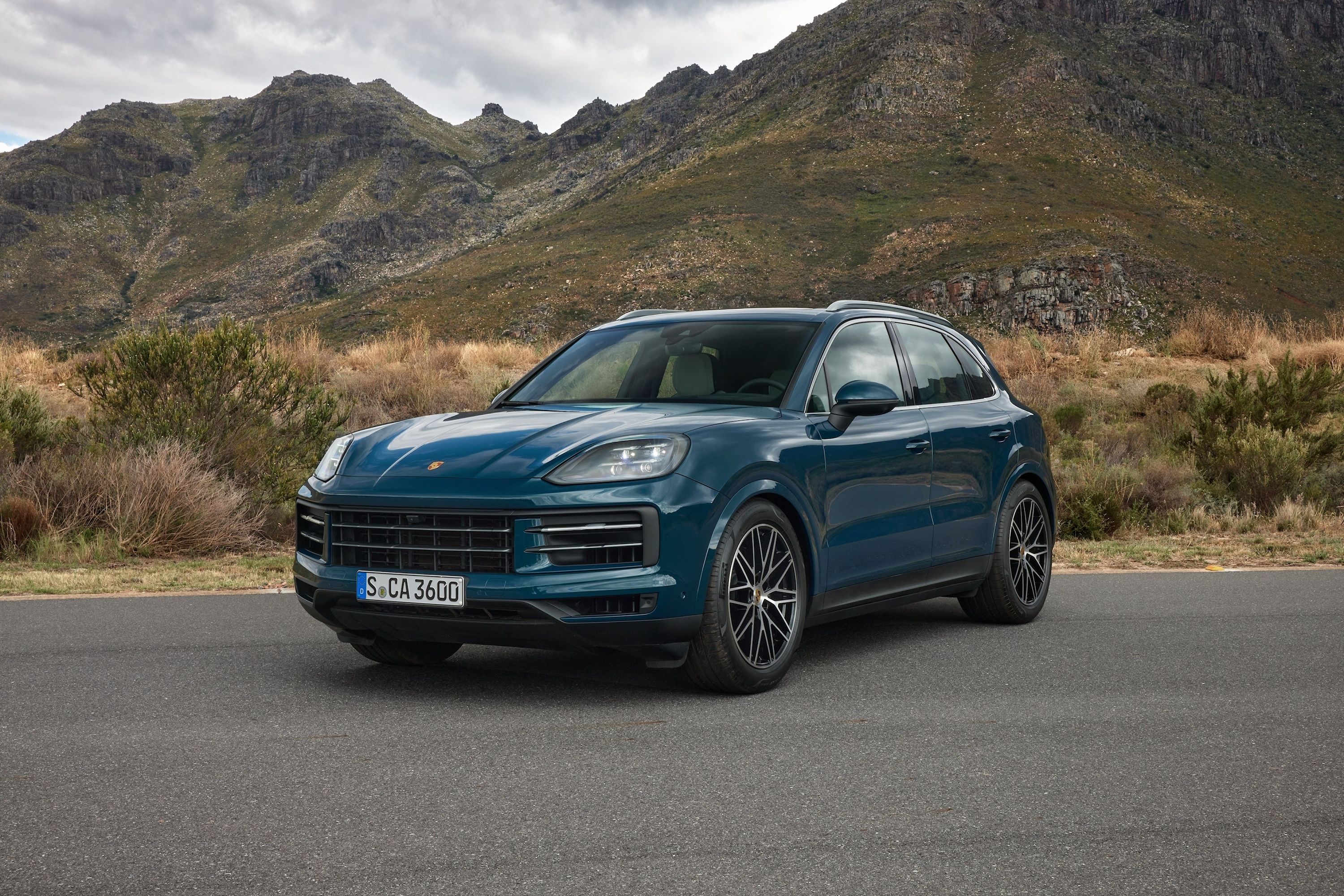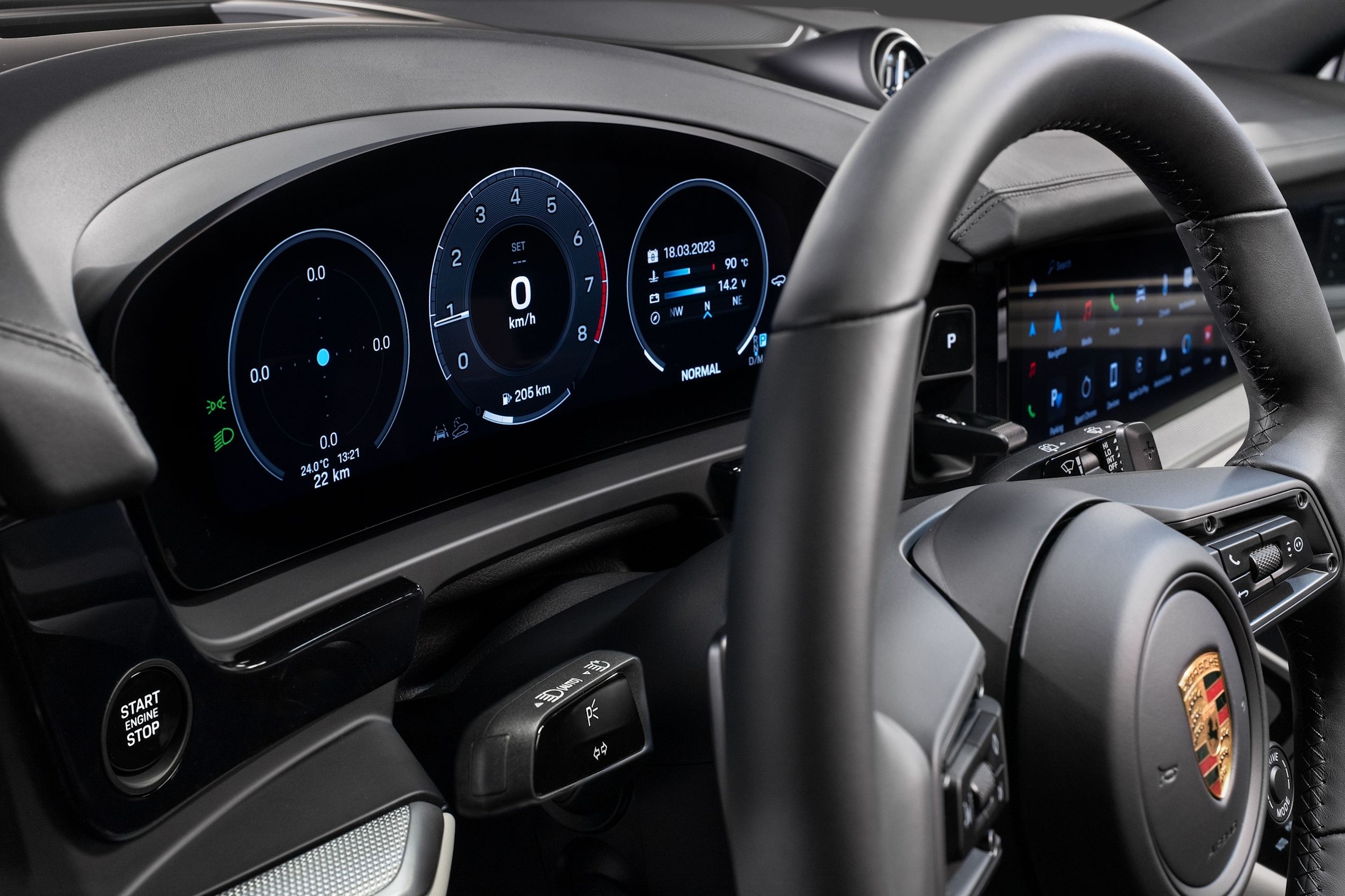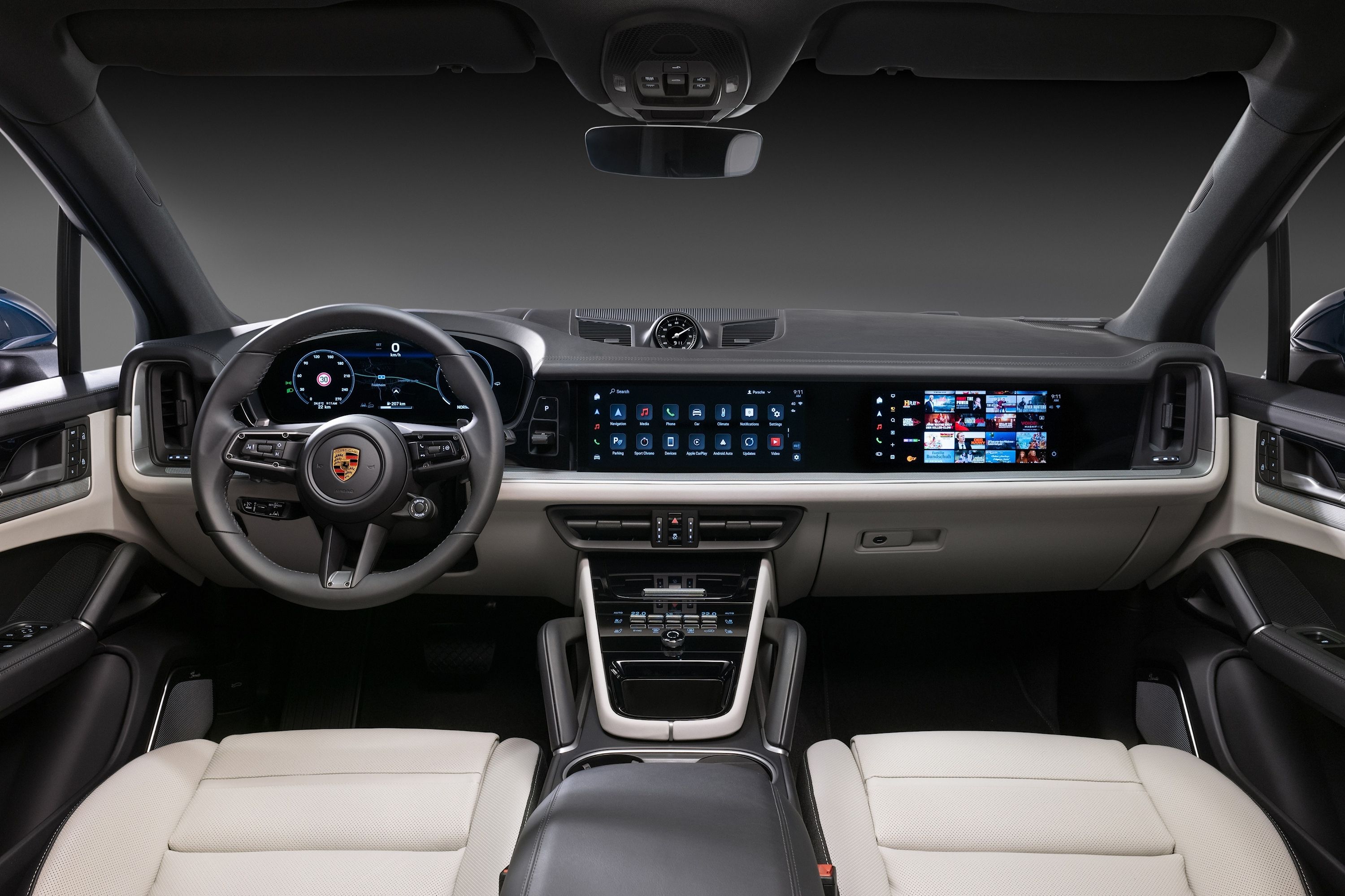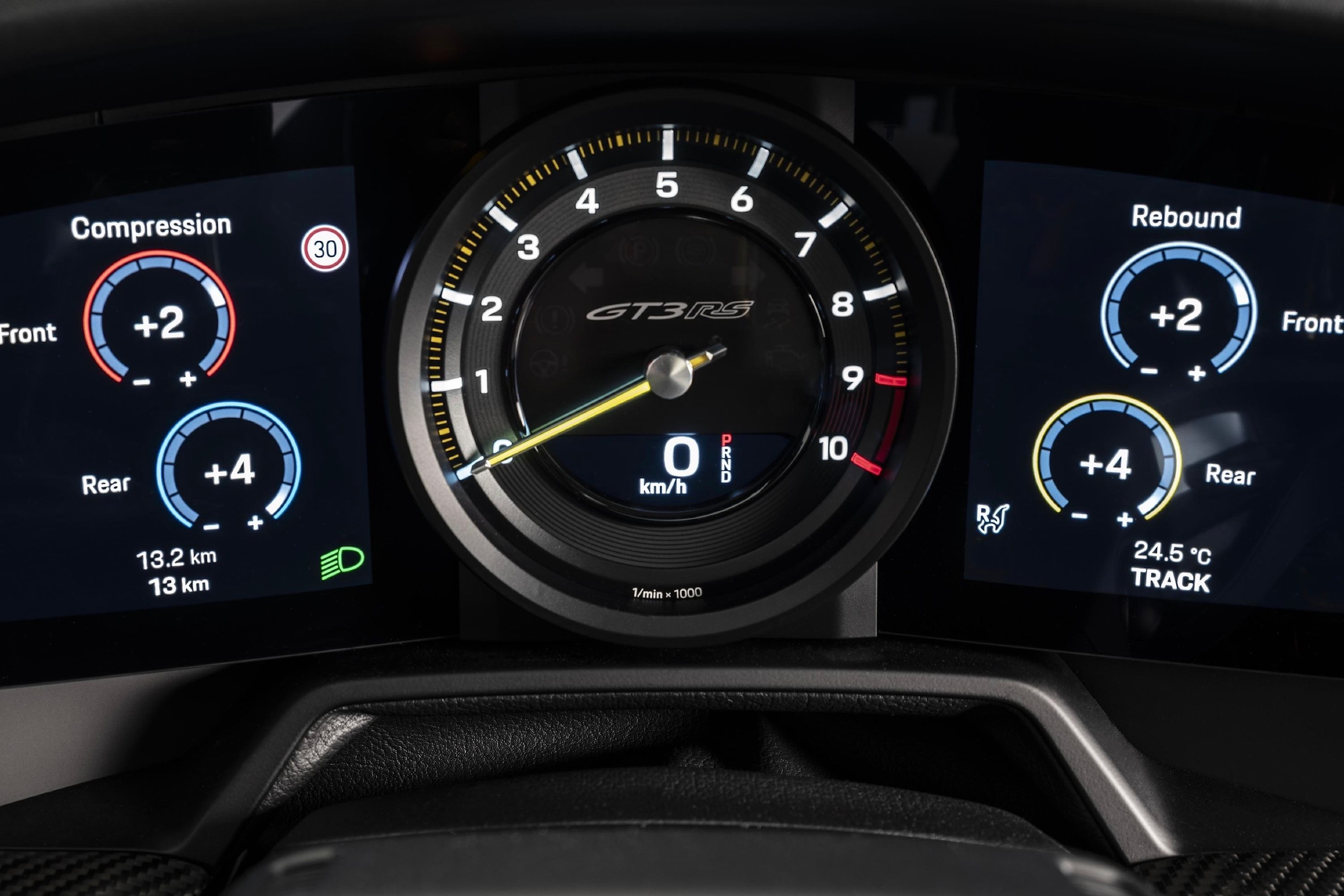
The interior of the facelifted Porsche Cayenne was revealed earlier this week with an all-digital driver display that eschews an analog rev counter, and this was a big decision for Porsche to make that took lots of arguing to come to. The Cayenne is the first combustion-powered Porsche model to dump the famous center-mounted rev counter, but it's not the first model in the brand's range to do so.
That (dis)honor belongs to the all-electric Taycan, which doesn't need a tachometer for obvious reasons.
The tachometer did not go down without a fight, however. In an interview with The Drive, Porsche's head of UX design revealed there were some reasonably heated discussions before the tachometer ultimately faced the chopping block.
"That was a pretty intense discussion that we had there inside of the company," said Ivo van Hulten. "We understood this has a great legacy to us, to have an analog rev counter. But also, if you look at the old 911s, we had five analog dials."
As is the German way, logic eventually won over emotion. The new technology allows Porsche to do more with the instruments than the current setup, which, in ICE cars, is an analog tachometer flanked by digital screens. Porsche's new digital instrument cluster is a 12.6-inch curved display, which, to be fair, comes with a classic mode that puts a digital tachometer front and center where it belongs.
"At a certain point, we realized this [all digital display] gives us more flexibility for the future. We think there [are] actually a lot of cool ways to solve this in a digital way," said van Hulten.
The new digital instrument cluster already has many skins, and more will likely become available via over-the-air updates. There's probably also a cost factor involved, as most manufacturers, whether budget or high-end, have switched over to a digital interface. Finding a supplier willing to make a curved screen with an analog dial in the middle is likely a challenging task at the moment. The industry standard is to put a screen on everything. The horsepower wars are done. Welcome to the touchscreen infotainment wars, and Mercedes-Benz is currently winning, at least on sheer size.
If you're looking for someone or something to blame, it's the Taycan. While designing Porsche's first EV, the designers were exposed to a fully digital setup for the first time.
"I think [the Taycan] liberated us a little bit, and then we decided let's do this and go forward with a digital approach," said van Hulten. "I think we found a way to still give you this feeling, but in a digital way."
From a logical perspective, we understand Porsche's decision. But cars are not always logical things; many purchases are emotional. If we boil this whole thing down to just the logical, why buy a Cayenne in the first place? A Nissan Sentra has the same number of seats and effectively does the same job of getting people from point A to point B.
The center tachometer was a USP and a reminder that every Porsche is designed with an inherent focus on enthusiastic driving, even in the most humble four-pot Macan.
People are already drawing parallels between the Cayenne's classic mode display and the new Mustang's Fox Body display. Volkswagen's cheapest EV will also come with retro dials similar to those used by the original Golf and Beetle. The fact that these associations are being made is a problem. In what other way can you compare a Porsche with a Mustang and an entry-level EV?
What remains to be seen is whether Porsche is brave enough to fully digitize the 911. Removing it from an SUV is one thing, but ripping it out of the car that represents everything the brand stands for is something else entirely.



